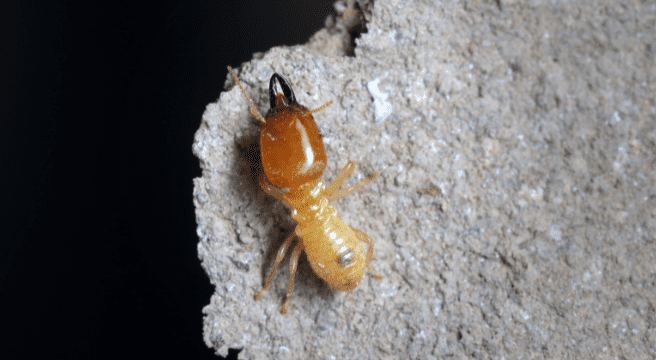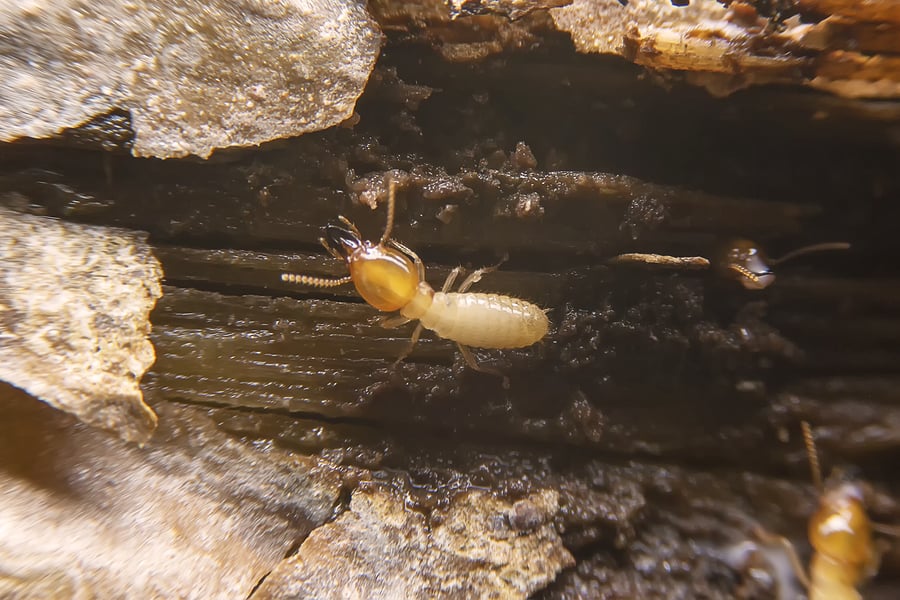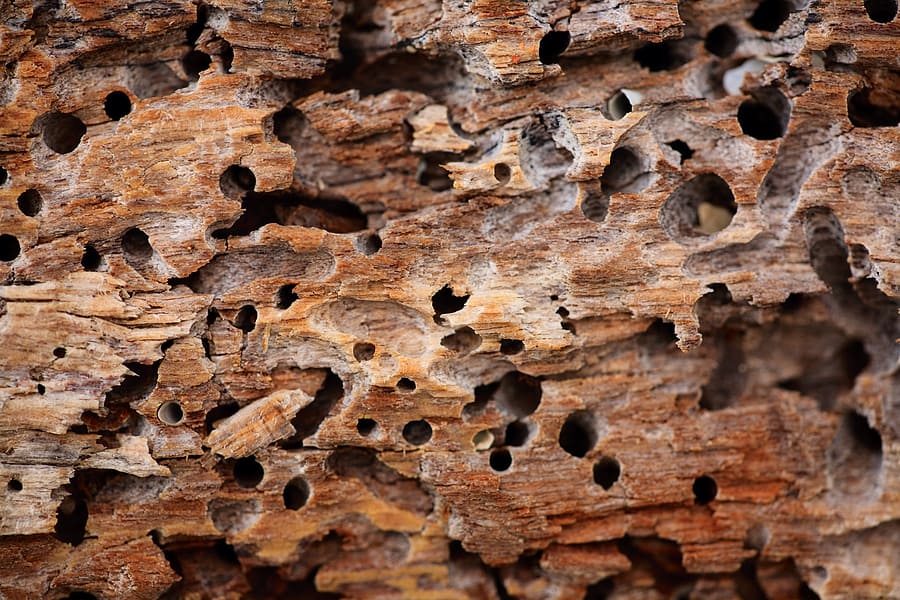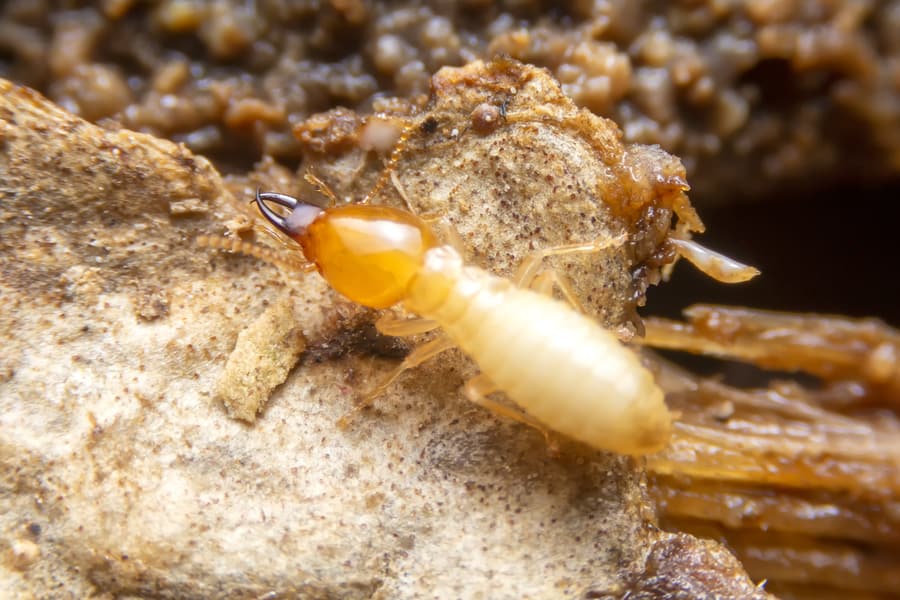READY TO GET STARTED?
REQUEST A FREE ESTIMATE
Fill out the form below or call (888) 466-7849 for a free, no-obligation estimate.

It’s a known fact that termites can cause costly and significant damage to your home, but did you know they are active year-round? Winter does bring some daily changes to termite colonies, including moving deeper into the ground for warmth or seeking shelter in your home’s foundation. Both cases are something to be wary of, especially when it comes to the health of your home.
Subterranean termites might seem like they can’t cause damage in the winter when they burrow deep underground, but don’t let that fool you. When termites burrow underground, they tunnel deep beneath your home’s foundation and can cause structural damage, such as causing your home to shift and become uneven, which is costly to repair.
The plus side to termites in the wintertime is that swarms are nearly impossible. Termite swarms may sound like a scene out of a science fiction movie, but they are necessary for the survival of termites. Fortunately, they are not common in the winter, as they tend to move further away from their colonies in the warmer months, making it more difficult to find them. Consider putting preventative measures in place around your home during the winter season before these pests become active again in the spring months, which mark the beginning of swarming season.
There are several ways to prevent termites, even in the wintertime. There are many great services offered to homeowners that can be beneficial year-round. The most effective option in termite prevention is the Sentricon Always Active® system. It is an environmentally responsible choice for home termite protection and is scientifically designed to eliminate the entire colony – including the queen. It’s crucial to prevent termites, whether they’re active or not.
Termites can be extremely difficult to identify, avoid, and eliminate once they are established. If you spot signs of termites in your home or just want to get ahead in the prevention game, contact a professional pest control company who can set you up with annual termite inspections and even a termite control plan.
The first step in termite prevention is to be ready for them. One of the most important things you can do is learn the signs of termites in order to catch them early. Termites can often go undetected for long periods of time, causing significant damage before you are alerted to their presence. The most common types of termites include subterranean termites, drywood termites, and Formosan termites. The type of termite and the location of the infestation help determine the best type of termite treatment to use. Here are four of the most common termite treatments utilized by termite control professionals.
Pretreatments are termite treatments that are performed during the building phase of new construction. It is also preferable to utilize pretreatments when constructing additions on an existing home, as well. Pretreatments are more effective and affordable when utilized before the physical infrastructure of a home or addition is laid. Pretreatments involve a combination of liquid termiticide (commonly containing borates), termite bait, lumber treatment, and in soil barriers.
Barrier treatments form a literal barrier in the ground between termites and your home. A trench is dug around the perimeter of your home and the soil that is removed is treated heavily with a termiticide. The trench is then refilled with the treated soil. In some cases, a physical wall is also constructed inside the outer wall of the trench made up of rock, sand, mesh, and plastic. This adds an additional layer of protection between your home and termites.
Liquid treatments are the most common termite treatments utilized. These treatments are effective for termite infestations on the interior of your home. In these treatments, holes are drilled strategically in both the foundation and the wood. Termiticide is then injected into the holes which forces the termites to emerge. The termites are then exterminated by spot treatments with termiticides.
In these treatments, bait stations containing wood, paper, or cellulose that is laced with termiticide are placed in the ground around your home. Termites are attracted to the bait and eat it. The termiticide is slow acting which allows the termites to return to the colony and spread the bait to others, killing off the entire colony. Bait stations can be used in locations where surface treatments can’t, such as near foundation drains and areas that are covered by slabs or flooring. Bait stations are an effective and long-term treatment solution.
Termites can get out of control quickly and be incredibly difficult to eradicate. If you suspect you have a termite problem, contact your local pest control company for a termite inspection to identify the type of termite and recommend the best course of treatment.
5 Pests That Can Destroy Your Lawn
Why Are Cockroaches So Resilient?

Owning a home is a huge investment and can take plenty of time and energy to maintain the upkeep. Whether it’s your first home or a home you’ve had for years, discovering that it has termites can be unexpected and devastating. Subterranean termites can cause considerable damage to your home’s infrastructure and the cost of repairing it can be in the thousands of dollars. There are two major reasons termites are attracted to your home.
Subterranean termites are attracted to moisture and need an abundant source of it to survive. Improper drainage around the home can often be the major and most common reason these pests have infested. Clogged gutters can cause water to pool up and cause damage to your foundation, making it vulnerable to termite damage. Leaves, twigs, and other debris that fall into gutters can build up, while the excess moisture can soften your roof and cause it to rot. Try to divert rainwater away from your foundation with a down-spot and splash blocks to help prevent the water from pooling. Consider investing in gutter guards to help keep debris and leaves out of your gutters.
Every homeowner is looking to make their home aesthetically beautiful; but often the materials used throughout your yard for landscaping purposes can attract termites. Mulch is commonly used near and around the home, sometimes lying against the foundation. Unfortunately, this material is a major attractant to termites as it can serve as a food source if it retains moisture. Mulch placed near the foundation can lead to these pests residing right at the edge of your home. Instead of mulch, consider using landscaping rocks, or try to minimize the use of wood mulch and keep it at least 15 inches from the foundation.
If you suspect a termite infestation or would like to get ahead of preventing them, consider contacting your local pest control company where they can provide you with the best termite control options for your home.

One of the most important things a homeowner must do is protect the wood within their structure. Two of the most common causes of wood damage in a home are wood rot and termites. Both of these can cause significant damage by going undetected for long periods of time. Signs of wood rot and termite damage are similar, often making it difficult to determine what type of problem you have. It is important to know which of these you are dealing with in order to properly resolve it. Here are some signs of termites and wood rot and how to tell the difference between the two.
There are two types of wood rot: dry rot and wet rot. Dry rot is caused by fungi that attack wood, destroying it from the inside out. Dry rot can affect any untreated wood that has a 20% moisture content. This type of rot spreads quickly and is also known as brown rot. Wet rot is common in homes that have a preexisting moisture problem such as a leak around an air conditioner, a malfunctioning downspout, clogged gutters, leaky faucets, or shrubs that are too close to the house. With wet rot, the surface veneer of the wood is impacted so it is usually easier to spot. Wet rot can affect any unprotected wood. It tends to be more localized than dry rot and doesn’t spread as much.
Some common signs of dry wood rot include:
Some common signs of wet wood rot include:
Subterranean termites are one of the most common types of termite, although drywood termites can also cause significant damage. Termites eat cellulose that is present in wood, hollowing them out from the inside out. Termites access your home through cracks in the foundation and walls. Because termites eat from the inside out, they can often go long periods of time undetected.
Some common signs of termite damage include:
Whether you have wood rot or termites, the most important thing is to recognize the issue and get it resolved as quickly as possible. If you have an issue with termites or any other pests, contact your local pest control company for a free analysis and treatment plan.
The Importance of Commercial Pest Control
Fact or Fiction: Mothballs Keep Snakes Away

Did you know that certain termite species, such as subterranean termites, are active year-round? This means that even on the hottest or coldest days of the year these pests can still cause considerable damage and destruction to your property. Termites are in search of two things: a food source and a place to establish their colony. The first step in preventing termites is knowing what attracts them so you can take the necessary precautions to avoid them!
Termites like to colonize near a food source, most often soft or rotting wood. Firewood and other wood piles throughout your property are a major attractant to termites. This wood provides them with both a supply of food and a place to create their colony. If you must have this wood on your property, place it at least 20 feet from your home and elevate it at least 5 inches off the ground.
Summer showers are inevitable, meaning that your gutters could quickly become clogged. While clogged gutters can damage your home’s foundation, they can also attract termites. As the debris blocking the gutters accumulate, the excess moisture can soften your roof and cause it to rot. These areas provide termites an easy way to get inside your home. Make sure that your gutters are cleaned out regularly, especially after a bad rainstorm or consider installing gutter guards.
Every homeowner wants their yard to look aesthetically pleasing but sometimes the materials used for landscaping (like mulch) can attract termites to your home. Mulch is comprised of wood chips that can retain moisture, making it a perfect source of food for termites. Instead of mulch, consider using landscaping rocks; if you do use mulch, place it at least 15 inches from your foundation.
If you suspect a termite infestation or just want to get ahead of preventing them, consider calling your local pest control company where they can provide you with the best termite control options for your home.